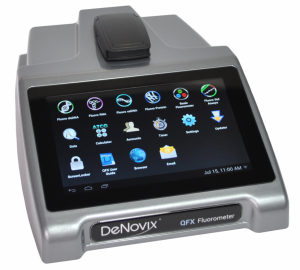
Fluorometers: Essential Tools for Precise Quantification of Biomolecules
Fluorometers are vital instruments for the accurate quantification of biological molecules such as nucleic acids and proteins. These devices are indispensable across various biochemical fields, including life sciences, environmental monitoring, pharmaceutical quality assurance, and bioengineering. With their ability to deliver high-sensitivity measurements, fluorometers can detect samples at sub-picogram concentrations. This article explores the operating principles of fluorometers, explaining their core mechanisms and emphasising their importance in scientific research and analysis.
How Fluorometers Work
Fluorometers function by detecting biological analytes through fluorescence. The process begins when the sample is bound to a fluorescent agent and then introduced into the instrument using a polypropylene tube. Numerous fluorescent reagents are available on the market, including nucleic acid dyes, cell function dyes, and fluorescent proteins, allowing researchers to customize their experiments as needed.
Fluorophores have a distinct ability to absorb light at a specific excitation wavelength and then emit light at a longer wavelength with lower energy. Some fluorophores exhibit enhanced fluorescence when bound to specific targets like double-stranded DNA (dsDNA). By directly linking the fluorescence intensity (RFU) of the assay to the concentration of target biomolecules, researchers can accurately quantify them.
The High Sensitivity of Fluorometry
Fluorometry is renowned for its exceptional sensitivity, enabling the detection of biomolecules at concentrations as low as 0.0005 nanograms per microliter (ng/µL). Additionally, fluorometry offers exclusive detection of target analytes, effectively reducing inaccuracies caused by contaminants or unknown substances. By comparing the fluorescence intensity of unknown samples against that of known standards, scientists can reliably quantify the exact concentrations of their target molecules.
Limitations of Traditional Fluorometry
Despite its many benefits, conventional fluorometry faces a significant limitation: a lack of assay flexibility. Traditional fluorometers are often limited to pre-configured excitation and emission channels, restricting the variety of fluorescence assays that can be used. However, DeNovix has addressed this issue by developing a groundbreaking fluorometer that offers enhanced versatility. DeNovix fluorometers feature four emission and excitation channels, providing unmatched flexibility for assay selection. With a broad coverage of excitation (375–635 nm) and emission (435–740 nm) spectra, these instruments support a wide range of assays, from dsDNA and ssDNA to RNA, proteins, and even custom assays.
DeNovix specialises in creating innovative measurement devices designed for research applications. As a leading supplier of fluorescence-based measuring instruments, they offer unique fluorometer technology that delivers exceptional flexibility, sensitivity, and reproducibility.
DS-11 Series
The DS-11 Series combines a high dynamic range for fluorometry with microvolume absorbance capabilities, offering best-in-class detection of biomolecules in microliter samples. These compact, user-friendly instruments support full-spectrum UV-Vis analysis and fluorescence, making them ideal for fast nucleic acid and protein quantification. The QFX fluorometer can quantify between 0.5 pg/µl and 4000 ng/µl DNA producing data in less than two seconds. Contact our DeNovix specialists today to learn more about these instruments.
